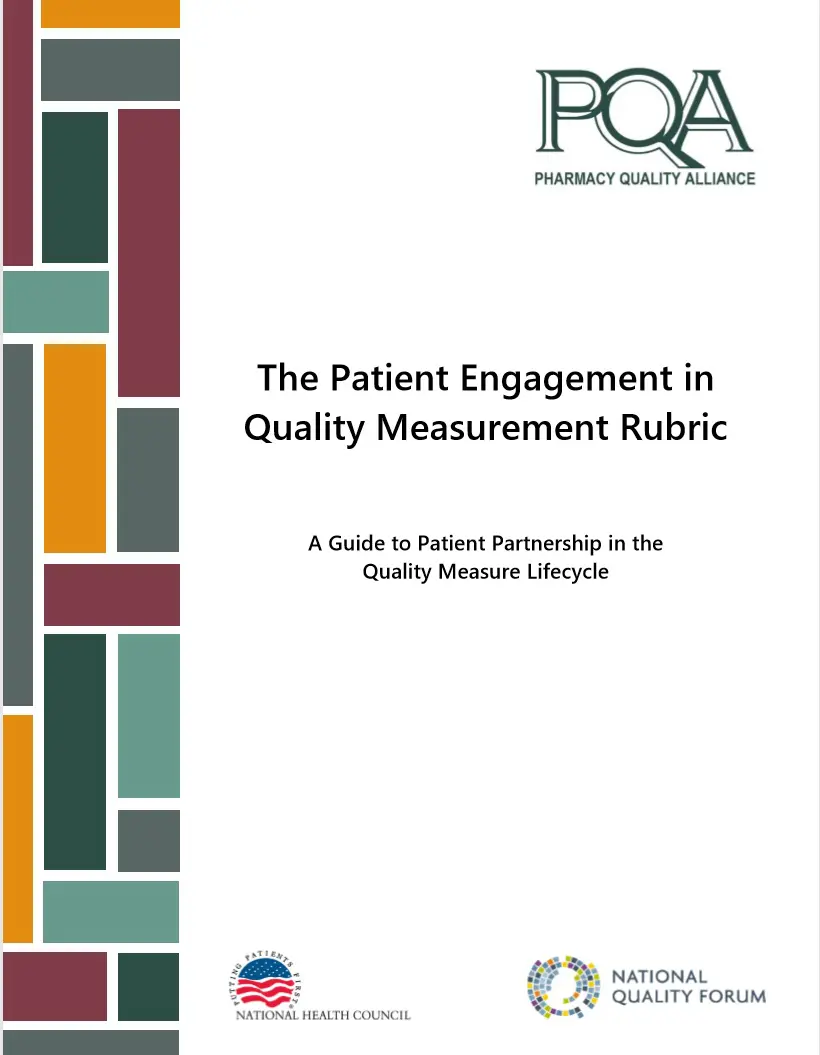Introducing New Patient Engagement in Quality Measurement Rubric
10/08/2019
The National Health Council (NHC) partnered with the Pharmacy Quality Alliance (PQA) and the National Quality Forum (NQF) to create the Patient Engagement in Quality Measurement Rubric. This guide was created to help include meaningful patient engagement to the quality measure lifecycle.
In early 2019, the NHC, PQA, and NQF held a series of multi-stakeholder roundtable conversations to develop a rubric describing patient-centered care and the engagement of quality measures. The rubric describes the levels of engagement in quality measurement across patient-centered principles and provides recommended activities to improve patient engagement.
The development of quality measure lifecycles with the involvement of the patient community enhances measures so they are meaningful, easy to understand, and useful to the patients and their family caregivers.
“By ensuring the patient and caregiver communities are involved from the start of the quality-measurement process, we will develop measures that are meaningful to the patient and that measure what is most important to them,” said Eleanor Perfetto, PhD, MS, Executive Vice President of Strategic Initiatives at the NHC.
This rubric was created to identify that engagement is progressive, transparent, meaningful, representative, and patient-centered. It can be applied to measure conceptualization, specification, testing, implementation, use, continuing evaluation, and maintenance.
Although the rubric was primarily designed to be used by measure developers, it is suitable for use by measure implementers and the patient community to characterize their engagement in measure development and guide how these partnerships can be enhanced.
Learn more at our Quality Resource Center here.
Learn more about quality by participating in our online educational series, Increasing Patient-Community Capacity to Engage on Quality of Health Care here.
Watch our CEO, Marc Boutin, discuss how the health care industry can balance the growing pressures of improving quality and reducing health care costs while remaining patient-focused here.
